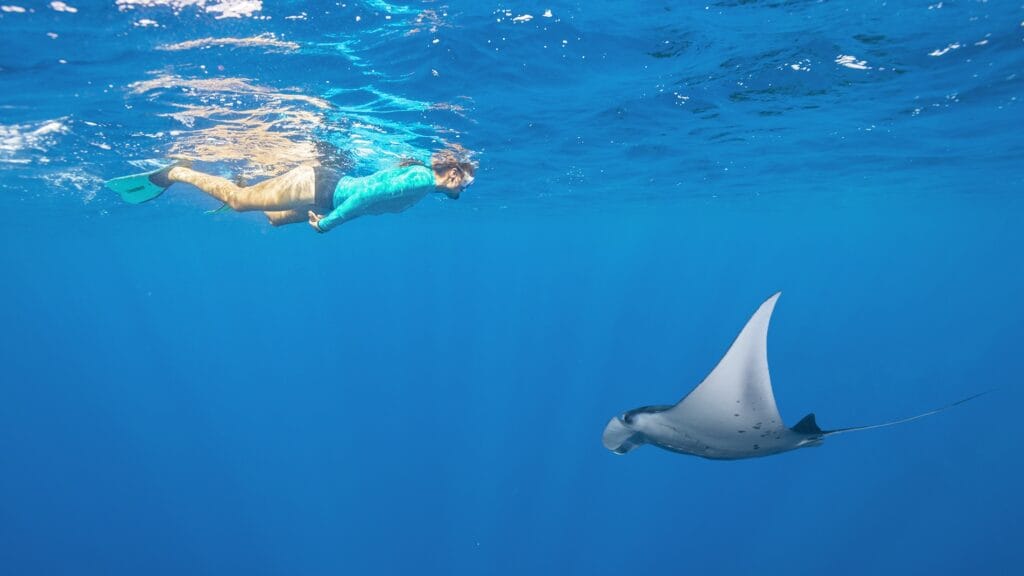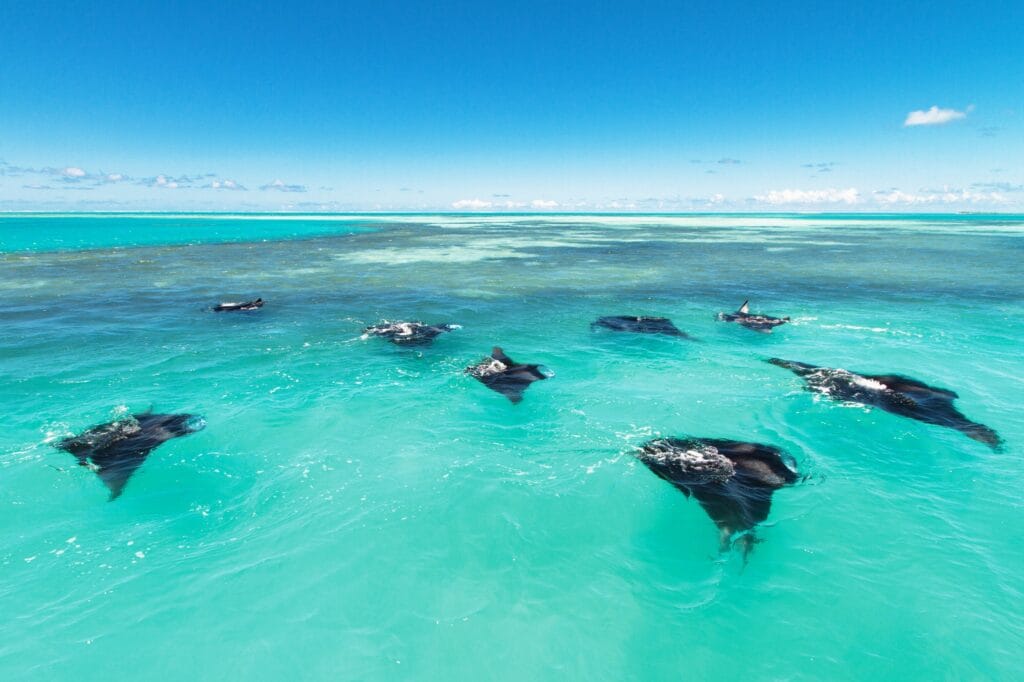We were interested to receive this report from the Alphonse Foundation about the manta project they are currently conducting. If you’ve five minutes to spare, it’s an interesting read.

After three years of planning, two and a half years of fundraising, and collaboration with partners around the world we got stuck in with three weeks of fieldwork acoustically tagging 20 mantas and taking genetic samples from 30.
The aims of the project are:
- To investigate the spatial ecology of the reef manta rays around the Alphonse Group utilising the 68 underwater receivers situated around the outer reefs and inner lagoons of the atolls which will detect the high-frequency pings emitted by the tags on the mantas as they swim past.
- To look at how the mantas are utilising the atolls on a fine spatial scale, the acoustic data will be overlaid with tidal and weather data to look at the conditions that affect the manta movements.
- To look at what factors influence their movement patterns and residency times around the atolls at different stages of life in male and female mantas, the critical habitat will be identified which will help influence local conservation management decisions.
- To track mantas tagged on Alphonse as they show up on the receiver array at D’Arros, St Josephs, and some other northern Amirante islands such as Poivre. This will give definitive data on how often these mantas are travelling around the Amirante chain and utilising different habitats, this has been a main aim since 2016 but photo ID data can only be collected when you see mantas, and what they are up to when surveyors are not in the water which has been a mystery until now!
- To contribute genetic samples to an Indian Ocean-wide genetic study looking at connectivity throughout the region, again with major international conservation implications for mantas.

Expert tagger, Luke Gordon, who is head of Manta Trust Fiji, flew out to assist with the project and train the team on the ground in tagging and sampling techniques. The tags are about the size of a cigar and sit outside the manta; a tagging pole is used which injects a skin anchor into the muscle tissue of the manta and a strong thread connects that to the tag which sits outside. Anyone swimming around with the Alphonse mantas for the next few months will see the tags straight away as they have been painted with bright blue anti-foul paint. The genetic samples were collected using the same pole but instead of inserting a tag, the tip extracted a tiny piece of tissue.
The next download of the data from the receivers will be in February and we are so excited to start getting stuck into preliminary analysis, at least looking at which tagged mantas have stuck around and what they are up to. The project has a three-year timeline after which everything will be fully analysed, reports and papers written, and conservation management implemented. The results of this project have not just local implications but will also be highly useful for protecting remote, poorly studied manta populations in other small island states where pressures may be higher.
Diving and snorkelling with these magnificent animals is one of the many wonderful activities that can be arranged alongside fishing around Alphonse Island.
For more details on fishing, and holidays, in the Seychelles please do not hesitate to contact Peter McLeod or Alex Jardine or call our office on +44(0)1980 847389.
